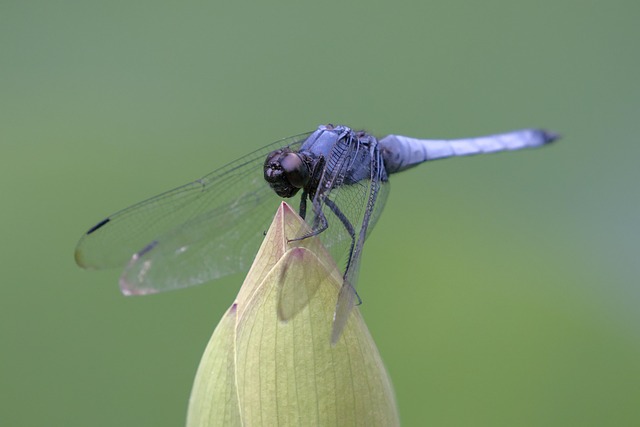Understanding fly behavior is crucial for effective professional fly removal. Flies have short adult lifespans but can breed rapidly in moist, organic environments. Prevention strategies include identifying and eliminating attractants like garbage, overripe fruits, and stagnant water. Regular sanitation, sealing entry points, and proper waste management disrupt breeding cycles. Commercial settings require professional services to maintain hygiene standards. By combining prevention tactics with advanced removal techniques, professional fly removal ensures a fly-free environment.
“Unwanted fly infestations can disrupt your environment and business operations. This comprehensive guide offers expert advice on preventing future fly problems. We explore the behaviors and life cycles of flies, pinpointing common entry points and attractants. Learn effective sanitation practices and discover professional fly removal techniques and prevention strategies for a pest-free space. Implement these steps to safeguard against costly and unsanitary fly infestations.”
Understanding Fly Behaviors and Life Cycles
Understanding the behaviors and life cycles of flies is a crucial step in any professional fly removal strategy. Flies, particularly house flies and fruit flies, exhibit distinct patterns that allow them to thrive in various environments. Adult flies live for approximately 25-40 days and during this time, they mate and lay eggs. Female flies seek out suitable breeding sites, often in moist, organic matter rich environments like rotting food or compost piles. Knowing these habits empowers professionals to implement targeted prevention measures.
By identifying common fly attractions, such as unsealed garbage cans, overripe fruits, or stagnant water, experts can offer tailored solutions. Regular sanitation, proper waste management, and sealing entry points are effective strategies to disrupt fly breeding cycles. Additionally, understanding that flies can travel up to 3 miles for food makes it imperative to maintain a clean and fly-free environment throughout properties, especially in commercial settings where professional fly removal services play a vital role in maintaining hygiene standards.
Identifying Common Entry Points and Attractants
Identifying where flies enter your space is a crucial first step in preventing future infestations, and professionals in fly removal recommend assessing potential entry points around your home or business. Flies are notorious for finding their way in through open doors, windows, and even tiny cracks in walls or foundations. They are also attracted to certain scents, foods, and organic materials. Common attractants include uncovered garbage, ripe fruits, pet waste, and stagnant water. Once these entry points and attractants are identified, you can take targeted measures to seal them off and eliminate the conditions that draw flies in.
Professionals suggest conducting regular inspections, especially during peak fly seasons, to stay ahead of infestations. By understanding where flies congregate and what draws them, you can implement effective prevention strategies. This may involve securing garbage cans with tight-fitting lids, maintaining good hygiene practices, repairing screens on windows and doors, and addressing any moisture issues that could encourage fly breeding grounds.
Implementing Effective Sanitation Practices
Implementing effective sanitation practices is a cornerstone in preventing future fly infestations. Professional fly removal experts emphasize the importance of maintaining a clean and sanitary environment, as flies are attracted to organic matter, food debris, and stagnant water—all of which can breed these pests. Regular cleaning routines, including prompt disposal of garbage, thorough mopping of floors, and sanitizing surfaces, create an inhospitable environment for flies, disrupting their breeding cycle and significantly reducing the risk of infestations.
Additionally, sealing entry points and ensuring proper ventilation are crucial. Flies can enter buildings through tiny cracks and gaps around doors, windows, and utility pipes. Sealing these openings with caulk or weatherstripping prevents fly access, while adequate ventilation ensures air circulation, making it less appealing for flies to linger or breed. These simple yet effective sanitation practices, combined with professional fly removal interventions when necessary, can create a fly-free environment.
Professional Fly Removal Techniques and Prevention Strategies
Professional fly removal often involves a multi-step approach combining advanced techniques and strategic prevention. Specialized pest control experts utilize equipment like vacuum-based systems that swiftly capture and eliminate flies, ensuring minimal disruption to your environment. Additionally, they employ sticky traps baited with attractants, which are particularly effective for monitoring and controlling fly populations.
Prevention is a key component of professional fly removal strategies. This includes eliminating standing water—a primary breeding ground for flies—by promptly draining containers, fixing leaky pipes, and maintaining proper drainage systems. Regular cleaning, especially in areas prone to food waste accumulation, can significantly reduce fly attraction. Seal cracks and gaps around doors and windows, and consider installing fine-mesh screens to create a physical barrier against these pests.
To prevent future infestations, it’s crucial to implement a multi-faceted approach. Understanding fly behaviors and life cycles is the first step, allowing you to identify common entry points and attractants. Next, adopt stringent sanitation practices to minimize breeding grounds. For stubborn cases, professional fly removal techniques offer effective solutions. Ultimately, staying proactive with prevention strategies will safeguard your space from these relentless intruders.
